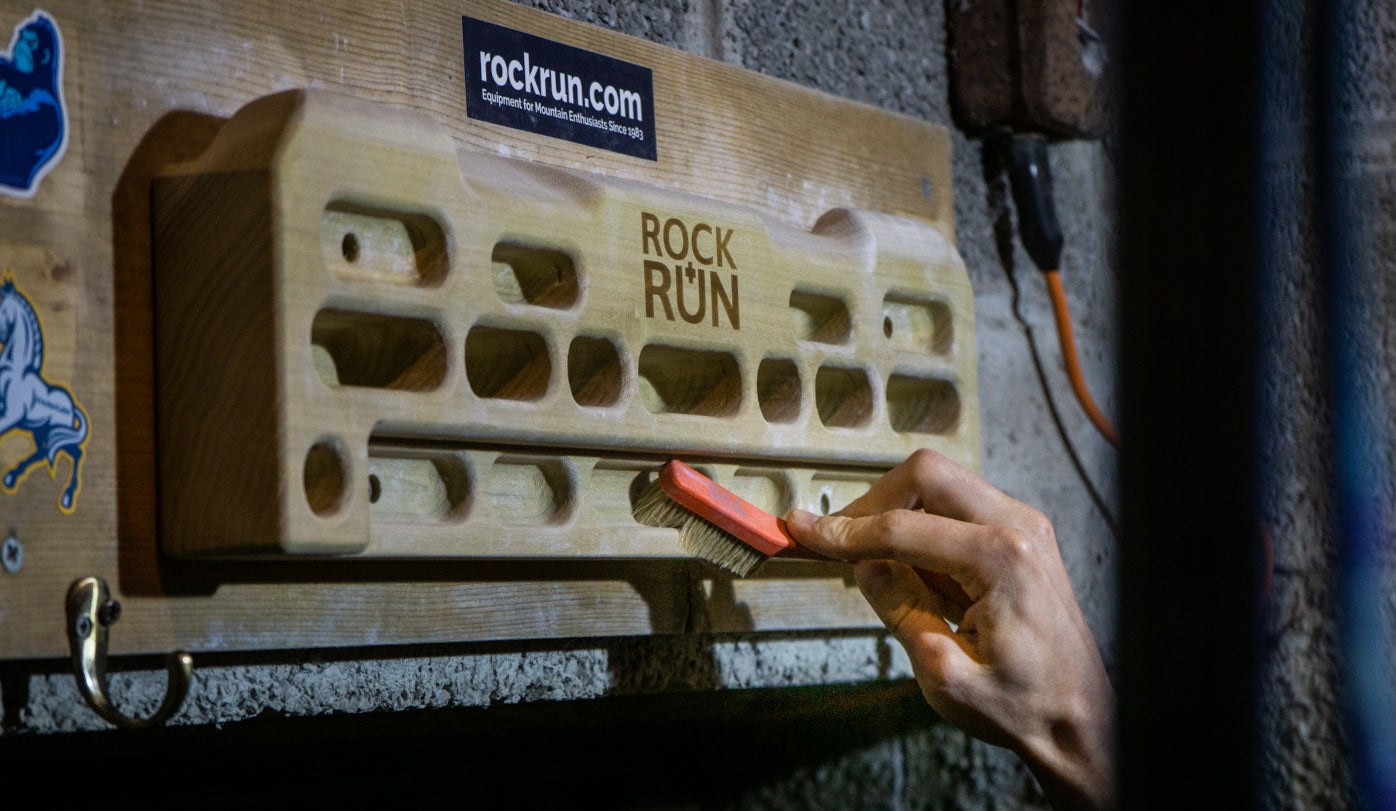By Morgan Cvetkovic-Jones
Firstly, what is a fingerboard?
A fingerboard is a piece of training equipment used to increase the strength of climbers. Fingerboards, which are typically made of wood or resin, simulate different types of climbing holds or edges encountered while climbing.
Why should I use a fingerboard?
A fingerboard can often look quite intimidating, especially if you’re new to the sport. But, with the appropriate exercises and techniques, using that fingerboard could help you overcome a plateau and greatly increase your finger strength. Fingerboards are a great way to really specify your training and precisely target weaknesses in a particular grip or finger group.
Who should fingerboard?
- Climbers with, at least, 1-2 years of climbing experience. Climbing puts an incredible amount of strain on our finger muscles and tendons and during the first few years of your climbing journey these tendons and muscles are still adapting to deal with this added intensity.
- Over 18’s. Climbers under 18 should not fingerboard unless they are specifically instructed by a coach.
- Climbers who have developed their climbing technique first. Finger strength and fingerboard training is no substitute for actual climbing and often the best way to improve, certainly in the first few years, is to improve your climbing technique. Fingerboarding is specifically for marginal strength gains to build upon good technical climbing foundations.
When should I fingerboard?
- Once you’re suitably warmed up. We recommend a 15 minutes (minimum) warm up consisting of 1. A pulse raiser. 2. Dynamic Stretches. 3. Easy hangs on large and comfortable edges/jugs on the fingerboard or (if fingerboarding at a gym) some easy climbs.
- At the start of a climbing session.
- On a pre-planned training day/session.
You should only be fingerboarding 1-2 times per week, especially if you’re interspersing this with climbing sessions.
Remember: Training is about quality and not quantity. Fingerboard training relies on maximum intensity so allowing yourself ample recovery time and scheduling training for when you feel fresh is key to achieving the best results and staying injury free.
You should AVOID:
- Fingerboarding after a climbing session – fingerboarding when fatigued is one of the most common ways to pick up an injury.
- Fingerboarding if any of your fingers/shoulders/elbows don’t feel 100% - fingerboarding is an easy way to exacerbate minor niggles or existing injuries.
- Fingerboarding on rest days – it might seem like the perfect opportunity to get some fingerboard training in but it’s incredibly important that you resist the urge and take a rest day(s) to let your body and fingers recover.
How should I use my fingerboard?
To achieve maximal gains from your fingerboard workouts and to avoid any potential injury, it’s essential that the correct form and body position is maintained throughout your session. If you can’t complete a session whilst sustaining the right form then this would suggest the exercise is too hard for you, choose an easier exercise/hold to achieve the optimal body position and maximise improvements.
Grip:
- To make the best gains and stay injury free, it’s strongly recommended that you use an open hand grip (A) or a half crimp grip (B).
- Never full crimp (C) or ‘3 finger drag’ whilst on the fingerboard. See below.
- A half crimp grip (B) is the most favourable of the grip positions for increasing finger and crimp strength.


Body position:
- Shoulders should be engaged. If your shoulders are next to/ touching your ears, they are not engaged.
- Elbows should have a slight bend. If your arm is completely straight, then you’re relying on skeletal structure rather than your muscles to stay on the fingerboard.
- Your back should remain vertical with the fingerboard, it should never be arched away from the fingerboard unless you are training a something like a front-lever.
- Leave your ego at the door, accept your weaknesses and don’t try to show off by hanging the mono’s – you’ll only end up looking like a fool.
- Don’t expect huge improvements right away, progress on a fingerboard is incremental, often taking time and practice to yield the best results.
How to train on a fingerboard
Check out our training plan for the new Rock + Run Praxis fingerboard.
For More Information
We have a range of articles on our blog that you may find interesting:
- The Basics: some article for those new to climbing and beginners.
- How to Guides: A series of guides answering specific questions you may have.
- Buying Guides: For when you are ready to start purchasing.
If you have any other questions, then please get in touch.















